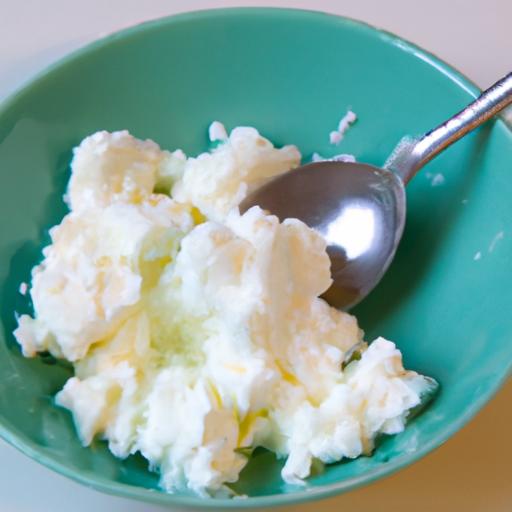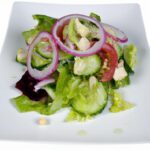In the world of frosty delights, frozen kefir stands out as a vibrant twist on the classic tangy treat-where creamy meets cultured in a refreshing dance of flavors. If you’ve ever wished you could capture that perfect balance of chill and thrill right in your own kitchen, you’re in the right place. This guide will take you on a delicious journey through the art of making frozen kefir at home, blending the science of fermentation with the magic of a homemade frozen dessert. Get ready to turn simple ingredients into a probiotic-packed, luscious scoop of goodness that’s as fun to make as it is to eat!
Chill & Thrill: Choosing the Perfect Ingredients for Creamy and Tangy Frozen Kefir
Chill & Thrill begins its journey with the very soul of the recipe: the ingredients. To craft that luscious, creamy, and tangy frozen kefir, each component must be thoughtfully selected, balancing tradition and innovation. Originating from Eastern European kitchens where fermentation is both art and science, frozen kefir has blossomed into a probiotic powerhouse that not only delights the palate but nurtures your gut health.
Prep and Cook Time
- Preparation: 15 minutes
- Fermentation: 24-48 hours (depending on room temperature and desired tanginess)
- Freezing time: 4-6 hours
Yield
Approximately 4 servings
Difficulty Level
Medium – requires patience for fermentation but simple steps overall
Ingredients
- 4 cups whole milk kefir (preferably homemade or high-quality store-bought, rich in live cultures)
- 1/4 cup organic full-fat Greek yogurt (for extra creaminess and a probiotic boost)
- 1/3 cup raw honey or maple syrup (adjust depending on your sweetness preference)
- 2 teaspoons pure vanilla extract (for aromatic balance)
- Zest of 1 organic lemon (for a bright, tangy kick)
- Pinch of fine sea salt (to enhance the flavors)
- Optional add-ins: 1/2 cup fresh berries, chopped mint, or toasted nuts
Instructions
- Prepare your fermentation base: In a large mixing bowl, combine the whole milk kefir and Greek yogurt. Stir gently to blend, preserving the active cultures critical for fermentation.
- Add natural sweetener: Drizzle in the honey or maple syrup and stir until fully incorporated. This not only sweetens but also assists your kefir cultures during freezing.
- Flavor enhancement: Mix in the vanilla extract, lemon zest, and pinch of sea salt to brighten and deepen the overall taste profile.
- Fermentation time: Cover the bowl loosely with a clean cloth and leave it at room temperature (about 70°F/21°C) for 24-48 hours. The longer you ferment, the tangier your frozen kefir will become. Check daily to find your preferred balance.
- Chill the mixture: Once fermentation reaches the desired tanginess, transfer the kefir blend into the refrigerator for 2 hours to cool.
- Freeze: Pour the chilled kefir mixture into an ice cream maker and churn according to manufacturer instructions, usually 20-30 minutes, until it reaches soft-serve consistency. For no ice cream maker, pour into a shallow container and freeze, stirring every 30 minutes to break up ice crystals until creamy (about 4-6 hours).
- Serve: Spoon into bowls or cones and garnish creatively with fresh berries, a sprinkle of toasted nuts, or a fresh mint leaf for an elegant, healthful treat.
Tips for Success
- Choosing kefir: Opt for whole milk kefir to get that rich creaminess; low-fat versions may produce a thinner texture.
- Adjusting tartness: Taste your kefir every 12 hours while fermenting to avoid over-fermentation, which can yield an overly sour flavor.
- Make-ahead: The frozen kefir freezes well for up to one week; thaw slightly before scooping for best texture.
- Dairy-free option: Try coconut milk kefir and substitute the yogurt with coconut cream for a plant-based version with tropical notes.
- Texture tricks: Adding Greek yogurt or a tablespoon of cherimoya or avocado can lend extra smoothness without overpowering the flavor.
Serving Suggestions
Serve your frozen kefir in chilled ceramic bowls or crunchy waffle cones to highlight the delightful contrast of creamy and crisp. Garnish with vibrant edible flowers, sliced fresh stone fruits, or a cinnamon dusting for seasonal flair. For an indulgent twist, drizzle a tangy berry coulis or dark chocolate shavings over the top.
| Nutrient | Per Serving |
|---|---|
| Calories | 160 kcal |
| Protein | 8g |
| Carbohydrates | 18g |
| Fat | 6g |
For a deeper dive into fermentation science and health benefits, visit the Cultures for Health Kefir Guide. Also, explore our article on homemade probiotic snacks to expand your chilled delights repertoire.

Q&A
Q&A: Chill & Thrill – Your Guide to Making Frozen Kefir at Home
Q1: What exactly is frozen kefir, and why should I try making it at home?
A1: Frozen kefir is a creamy, tangy twist on the classic probiotic-packed drink, transformed into a refreshing frozen treat. Think of it as the lovechild of yogurt and ice cream, bursting with live cultures that support your gut health while delighting your taste buds. Making it at home means you control the ingredients, can customize flavors endlessly, and enjoy fresh, wholesome frozen kefir whenever the craving strikes!
Q2: How does frozen kefir differ from regular ice cream or frozen yogurt?
A2: Unlike traditional ice cream, frozen kefir is cultured with kefir grains or a kefir starter, giving it a natural tartness and a probiotic punch. It’s tangier and often lower in fat, thanks to its base of fermented milk, and benefits your digestive system with live microorganisms. Frozen yogurt varies but usually lacks the unique diversity of kefir’s microbes, making frozen kefir a cooler, healthier thrill.
Q3: What basic ingredients do I need to start making frozen kefir at home?
A3: You’ll need kefir (either homemade or store-bought with live cultures), a sweetener like honey or agave to balance the tang, and your choice of flavor add-ins such as fresh fruits, vanilla, or even spices like cinnamon. That’s it! A freezer-friendly container and an ice cream maker are optional but can elevate your experience.
Q4: Is it difficult to make frozen kefir at home if I’m new to fermentation?
A4: Not at all! If you can handle making yogurt or smoothies, you’re halfway there. Fermentation is straightforward, and kefir grains are incredibly forgiving. Once you have your kefir ready, freezing it with some gentle churning or stirring will yield a luscious frozen delight without intimidating kitchen wizardry.
Q5: Can I customize the flavors when making frozen kefir?
A5: Absolutely! Frozen kefir is a blank canvas for your flavor fantasies. Blend in berries, mango, or cacao nibs for sweetness and texture, or add herbs like mint and basil for a fresh zing. Even swirling in a bit of espresso or matcha powder can turn your frozen kefir into a gourmet adventure.
Q6: How do I store homemade frozen kefir, and how long does it stay good?
A6: Store your frozen kefir in an airtight container in the freezer. For the best texture and flavor, enjoy it within 1-2 weeks. Beyond that, it might develop icy crystals or lose some of its probiotic potency, but it’ll still be a delicious treat.
Q7: What are some tips for serving and enjoying frozen kefir?
A7: Let it sit out for a few minutes before scooping to soften. Serve it in colorful bowls or cones, topped with nuts, granola, or fresh fruit. You can also blend frozen kefir into smoothies or use it as a cool base for summer parfaits. The tangy creaminess makes it perfect for mixing sweet and savory toppings alike!
Q8: Are there any health benefits to eating frozen kefir regularly?
A8: Yes! Frozen kefir is a probiotic powerhouse that supports digestion, boosts immunity, and may improve your overall gut flora balance. Plus, it’s lower in sugar and fat than many commercial frozen treats, making your indulgence a nourishing one.
Q9: Can I make frozen kefir if I am lactose intolerant?
A9: Many people with lactose intolerance find kefir easier to digest because the fermentation breaks down much of the lactose. However, it varies individually. Try a small amount first and see how your body reacts. You can also make frozen kefir with dairy alternatives like coconut or almond milk kefir for a lactose-free version.
Q10: Where can I get kefir grains to start making my own frozen kefir?
A10: Kefir grains can be found online, at health food stores, or through kefir-making communities and local fermentation groups. They’re reusable and multiply with care, so once you have them, you’re set to enjoy endless batches of homemade kefir – and by extension, frozen kefir thrills!
The Conclusion
As you embark on your frozen kefir adventure, remember that this delightful treat is more than just a cool indulgence-it’s a vibrant fusion of health and flavor, crafted right in your own kitchen. With every creamy spoonful, you’re nourishing your body and tantalizing your taste buds, all while embracing the joy of homemade goodness. So chill out, thrill your senses, and let your creativity swirl as you whip up batches of frozen kefir that are uniquely yours. Here’s to turning simple ingredients into a frosty masterpiece-one scoop at a time!


